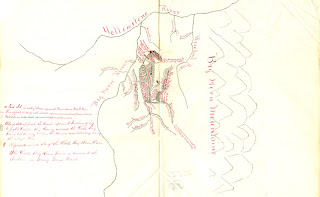Watch this Video from the National Park Service
Monday, October 29, 2012
The Players
General George Armstrong Custer of the 7th Calvary
Frost, Lawrence A. The Custer Album: A Pictorial Biography of General George A. Custer. Norman, OK: University of Oklahoma Press, 1964
By Delehaye (Own work) [Public domain], via Wikimedia Commons
Sitting Bull of the Hunkpapa Lakota Sioux
Barry, D. (Photographer). (1885). Sitting Bull. [Image of photograph]. Library of Congress. Retrieved October 29, 2012, from http://www.loc.gov/pictures/item/94506170/
The Campaign
Map of Cavalry Movement
National Park Service. (2004, January 26). Campaign Maps . In Little Bighorn Battlefield. Retrieved October 29, 2012, from http://www.cr.nps.gov/history/online_books/hh/1b/hh1l1.htm
A hand drawn Army map from 1876 based on an interview of Kill Eagle
The Battle: June 25, 1876
Because of the resulting casualties of every soldier in the five companies Custer Commanded, the only depictions we have of the Battle are those of artists
Custer's Last Stand (1899)
Edgar Samuel Paxson
The Custer Fight (1903)
By Charles Marion Russell
The Survivor: Comanche
One of the survivors of the Battle was Comanche, a bay gelding horse ridden by Captain Myles Keogh of the 7th Cavalry. Named Comanche because of his bravery, he was the second horse to be buried with full military honors.
Comanche in 1887
"Comanche" by Johnny Horton
The Aftermath

A telegram sent from a US Army General in Washington, D.C. to a US Army General in Chicago, asking of General Custer's fate (National Archives and Records Administration).
A letter from the Governor B.F. Potts of the Territory of Montana describing his fear of Native American action after Custer's demise (National Archives and Records Administration)
Subscribe to:
Posts (Atom)






.jpg)

